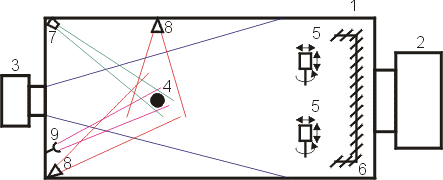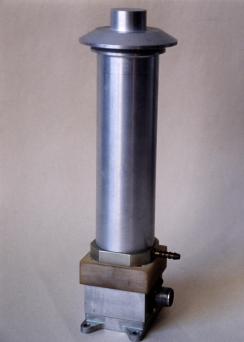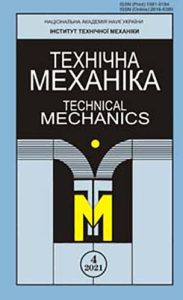Exposure of spacecraft in geostationary, high-elliptical, and high-latitude orbits to charged-particle streams and solar electromagnetic radiation results in the accumulation of electric charges on their outer surfaces and high potential differences (in many cases, as high as several kilovolts) both between the spacecraft as a whole and the surrounding plasma and between components thereof (differential electrization). Because of the nonuniformity of spacecraft surface coatings and the difference in illumination conditions, secondary-emission material properties, and plasma particle bombardment conditions, different elements and structures of a spacecraft are charged to different potentials. Differential electrization results in electric discharges, which disrupt the operation of spacecraft vital systems, disable them, cause material failure and degradation, and shorten spacecraft orbit life.
A technology has been developed to provide spacecraft electroradiation safety in geostationary, high-elliptical, and high-latitude orbits. The technology includes the selection and approval of electroradiation-resistant and electrically compatible materials of spacecraft outer surfaces based on the results of ground bench tests and the use of a special spaceborne system that neutralizes surface potentials with gas-discharge plasma jets.
At the spacecraft design stage, comprehensive bench tests of candidate materials and coatings for spacecraft outside surfaces are conducted to study their electrization by radiation in conditions that simulate the spacecraft operation in geostationary, high-elliptical, and geopolar orbits. In the tests, the electrophysical properties of the materials and their charge levels, electroradiation resistance, and electrical compatibility are determined, and recommendations are worked out on their selection, approval, and use for the prevention of the dangerous consequences of spacecraft electrization by radiation.
Ground tests are conducted on the plasmoelectrodynamic bench of the Institute of Technical Mechanics. The bench systems and performance characteristics allow one to simulate the spacecraft operating conditions, motion regimes, and interaction with the interplanetary medium (solar wind), cold and hot plasma, charged particles, electric and magnetic fields, solar ultraviolet, atomic oxygen, etc. in the Earth ionosphere and magnetoshphere in high-elliptical, geostationary, and geopolar orbits at altitudes of 150 to 40,000 km.

Parameters of the medium simulated on the bench
- cold (ionospheric) plasma flow speed – 4.5 to 8 km/s.
- cold plasma ion and electron concentration – 102 to 106 cm-3.
- electron temperature – 1 to 4 eV.
- ion and neutral temperature – 0.1 to 0.3 eV
- degree of ionization – 10-3 to 10-1.
- degree of dissociation (nitrogen, oxygen, hydrogen) – 0.4 to 0.7
- hot plasma high-energy electrons – 0.1to 35 keV.
- high-energy electron current density – 10-2 to 102 nA/cm.2.
- solar-spectrum ultraviolet radiation (115-700 nm) – 10-2 to 10-1 W/cm2.
- specimen surface temperature – 110 to 330 K.
- electromagnetic (microwave) radiation – 3 to 40 GHz.
The spaceborne surface charge plasma neutralization system is a simple, compact and reliable device, which features low power consumption and uses a pure gas as the working medium. The system comprises: an injector of low-temperature plasma positive ions operating in the glow discharge mode, a system of measurement of the electric field near the spacecraft surface, a system of feedback and control in the sensor–injector circuit, a gas storage and feed system, a power supply system, and a pneumatic automation system.

Once the dangerous level of the electric field strength near the spacecraft surface has been exceeded, the plasma injector turns on from a signal in the sensor. The injection pulse duration is determined by the charge–discharge processes on the spacecraft surface and the surface and volume charge neutralization rate.
At a discharge current of no more than 0.1 A and a power consumption of no more than 50 W, the injector generates a flow of “soft” plasma with a concentration of about 1011 – 1013 m-3 and a positive ion energy <=400 eV. An injector of height <=0.3 m placed on a surface exposed to radiation neutralizes the electric charge over an area of about 3 m2. The higher the injector is placed, the more is the area it “neutralizes”. Virtually all gases can be used as the working medium.

